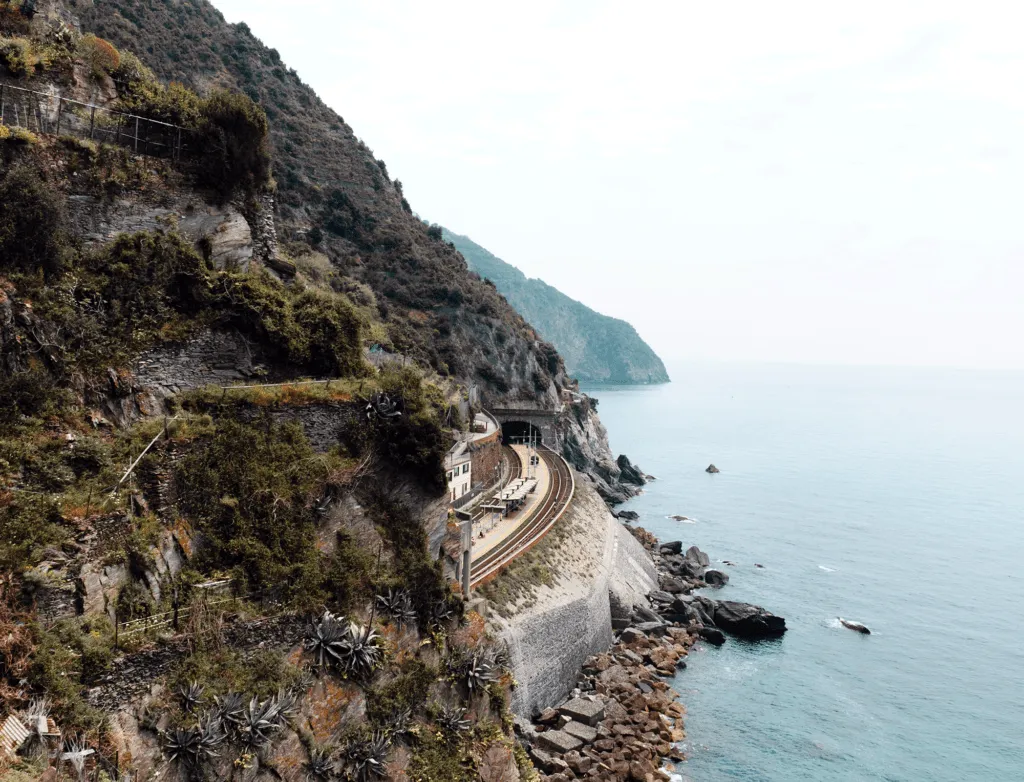The best way to travel the Cinque Terre.
Renowned as the best way to visit the Cinque Terre National Park, the Cinque Terre railway goes through all the Cinque Terre villages. Traveling by train allows for a cheap and fast connection between villages and beaches and allows for beautiful views.
As a result, in the high tourist season, the Cinque Terre railway can be extremely crowded, despite the high frequency of trains. Therefore, planning for your train trip is recommended, as well as avoiding midday hours and common mistakes. For example, many travelers departing from La Spezia Centrale or Levanto stations might mistake a faster train for the “Cinque Terre Express” or the “Treno Regionale.” These run every 15-20 minutes, calling every station in the Park.
You might want to use the Cinque Terre Cards for a cheaper and seamless Cinque Terre railway experience.

A wow stretch of railway
The train is, together with the boat
The railway connecting the five villages of the Cinque Terre is one of the most charming in the world. Above, it looks like a fabric rope embedded in the coast. Popping out tunnels at every tiny station surrounded by picturesque houses, train passengers often wow in an “oooooh” of surprise. They are constantly under the impression they could knock at the doors of their inhabitants and get some beautiful views of the coast.

A revolutionary engineering project at the time of its construction.
The Cinque Terre villages were isolated until the end of the 19th century, despite the linear distance proximity. The Cinque Terre railway project was decided with a Royal Decree-Law on 27th October 1860. It was part of the one connecting the western Italy border city of Ventimiglia with Massa in Tuscany, thus with the rest of the existing railways in central Italy. The Cinque Terre railway project’s section was the most complex and costly. It ran (and partly still does) for long stretches in contact with the sea and had to follow the twists and turns of the coast to minimize the number and length of the galleries. As a result, “only” 23 bridges with a total distance of nearly one kilometer were built, and 51 tunnels were drilled, covering over 28 km of the whole 44 km line.
The inclement winter weather of 1872 made it more complex; landslides and violent storms struck the works, causing many variations to the initial plan. Also, being long stretches of the coast inaccessible from land, transporting construction materials by sea had to be organized.

Finally, on 22nd July 1874, the Cinque Terre railway line was inaugurated.
It was built across a single track; doubling was completed only in the 70ies when the last railway section between Framura and Monterosso and the Bonassola and Levanto stations were added.
Some stretches of the very first railway are today cycling and pedestrian tunnels. One of them is the beautiful Levanto to Framura trail.


